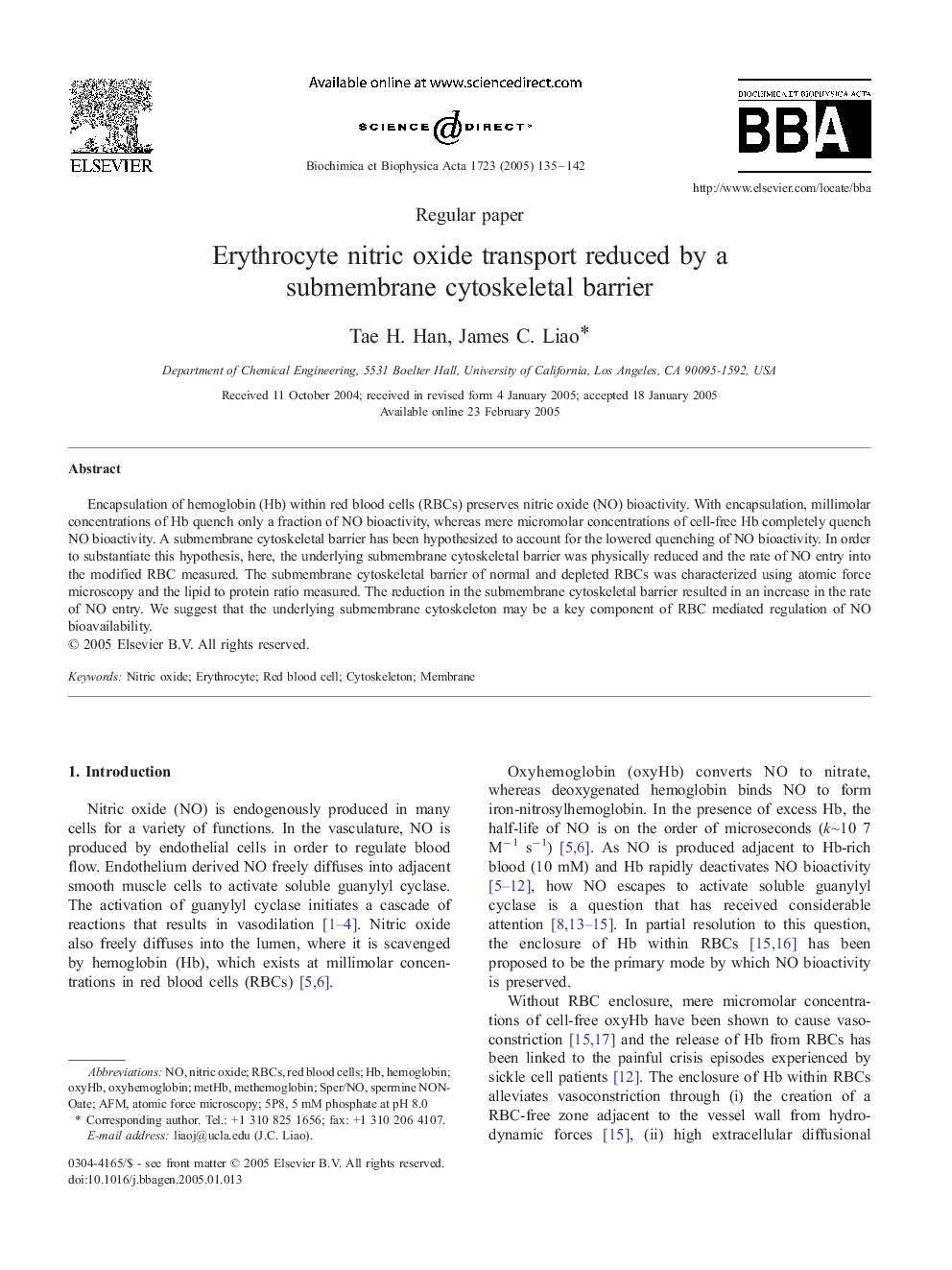| Article ID | Journal | Published Year | Pages | File Type |
|---|---|---|---|---|
| 9886128 | Biochimica et Biophysica Acta (BBA) - General Subjects | 2005 | 8 Pages |
Abstract
Encapsulation of hemoglobin (Hb) within red blood cells (RBCs) preserves nitric oxide (NO) bioactivity. With encapsulation, millimolar concentrations of Hb quench only a fraction of NO bioactivity, whereas mere micromolar concentrations of cell-free Hb completely quench NO bioactivity. A submembrane cytoskeletal barrier has been hypothesized to account for the lowered quenching of NO bioactivity. In order to substantiate this hypothesis, here, the underlying submembrane cytoskeletal barrier was physically reduced and the rate of NO entry into the modified RBC measured. The submembrane cytoskeletal barrier of normal and depleted RBCs was characterized using atomic force microscopy and the lipid to protein ratio measured. The reduction in the submembrane cytoskeletal barrier resulted in an increase in the rate of NO entry. We suggest that the underlying submembrane cytoskeleton may be a key component of RBC mediated regulation of NO bioavailability.
Keywords
Related Topics
Life Sciences
Biochemistry, Genetics and Molecular Biology
Biochemistry
Authors
Tae H. Han, James C. Liao,
